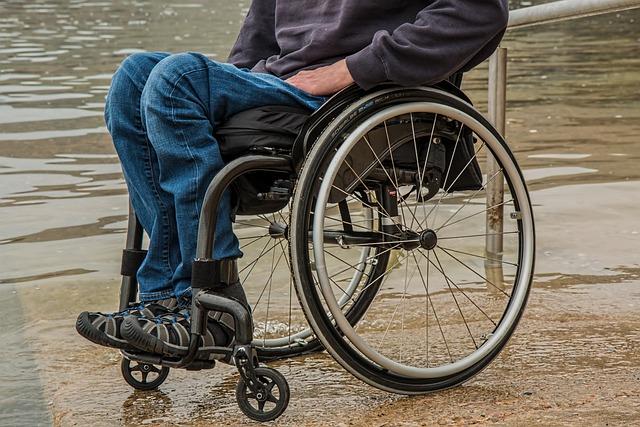In the unpredictable dance of life, where every step is a blend of calculated moves and unforeseen twists, financial security often plays the role of a steadfast partner. Many of us diligently tuck away funds for a rainy day, confident that our emergency savings will shelter us from life’s unexpected downpours. But what if the storm is fiercer than anticipated, lasting not days, but months or even years? Enter the often overlooked, yet critically important, world of disability insurance. This protective financial umbrella promises to keep you dry when the tempest of a disabling injury or illness threatens to drench your income stream. In this exploration, we peel back the layers to answer a crucial question: Do you really need disability insurance if you have a robust emergency fund? Let’s embark on this journey to uncover whether your savings alone can weather the storm, or if disability insurance is the unsung hero your financial portfolio truly needs.
When Savings Arent Enough the Hidden Gaps in Financial Safety Nets
Emergency savings are often hailed as the cornerstone of financial stability, a trusty buffer against life’s unpredictable twists. Yet, while having a robust savings account is commendable, it’s crucial to recognize that even the most disciplined savings plan may not be enough to cover the complexities of long-term disability. Here’s where the hidden gaps in financial safety nets become evident. Disability insurance steps in as a pivotal player, ensuring that your financial well-being isn’t left to chance.
- Duration of Coverage: Emergency savings might cover a few months, but what happens if your disability extends beyond that?
- Comprehensive Protection: Savings can dwindle fast with medical bills, home adaptations, and other unforeseen expenses that disability insurance is designed to handle.
- Preservation of Assets: Without insurance, you may have to dip into retirement savings or liquidate investments, jeopardizing long-term financial goals.
Understanding these hidden gaps underscores the importance of integrating disability insurance into your financial strategy. It’s not about redundancy; it’s about creating a holistic safety net that aligns with your life’s aspirations and challenges.

Beyond the Rainy Day Fund Why Disability Insurance is Essential
When we think about financial safety nets, emergency savings often take the spotlight. They are the superhero cape ready to swoop in when life’s unexpected expenses strike. But what happens when those unexpected events stretch beyond a few months, and the regular flow of income is halted indefinitely? Disability insurance steps in here, offering a long-term solution to a potentially life-altering situation.
While emergency funds are fantastic for covering short-term hiccups, they might not withstand the weight of prolonged income loss due to a disability. Consider these crucial benefits of having disability insurance:
- Income Replacement: It provides a steady stream of income, ensuring you can maintain your lifestyle without draining your savings.
- Peace of Mind: Knowing that your financial obligations are covered allows you to focus on recovery and well-being.
- Protects Long-term Savings: Safeguards your retirement and other long-term investments by preventing the need to dip into them prematurely.
By integrating disability insurance with your financial planning, you’re not just preparing for a rainy day—you’re building a fortress against the storm.

Crafting a Comprehensive Financial Shield Merging Savings and Insurance
When building a robust financial safety net, it’s essential to consider the unique roles that both savings and insurance play. Emergency savings serve as a readily accessible fund designed to cover unexpected expenses like car repairs or medical bills. However, these funds may quickly deplete if faced with a long-term income disruption due to disability. This is where disability insurance steps in as a crucial component of financial planning.
While your emergency savings are a fantastic first line of defense, they might not suffice during prolonged periods without income. Here’s why disability insurance is indispensable:
- Income Replacement: Disability insurance provides a continuous income stream, ensuring your lifestyle remains unaffected even when you can’t work.
- Protection for Long-term Savings: It safeguards your hard-earned savings and investments, preventing you from tapping into retirement funds prematurely.
- Peace of Mind: With coverage in place, you can focus on recovery without the added stress of financial insecurity.
In essence, while emergency savings offer immediate relief, disability insurance acts as a long-term financial guardian, fortifying your overall economic resilience.

Expert Recommendations Balancing Emergency Funds and Disability Coverage
When planning your financial safety net, it’s crucial to strike a balance between having a robust emergency fund and securing disability insurance. While both are essential, they serve different purposes and can complement each other effectively. Here’s what experts suggest:
- Understand the Timeframe: Emergency funds are typically designed to cover short-term needs, such as unexpected car repairs or a sudden job loss. Disability insurance, on the other hand, provides long-term financial support if you’re unable to work due to a disability.
- Evaluate Your Risk: Consider your profession and lifestyle. If you work in a physically demanding job or have pre-existing health conditions, disability insurance becomes even more crucial.
- Determine Coverage Needs: Experts recommend having at least three to six months’ worth of living expenses in your emergency fund. Disability insurance should cover a significant portion of your income, ideally 60-70%, to maintain your standard of living.
- Layer Your Protection: Use emergency savings for immediate expenses while waiting for disability insurance benefits to kick in, which often have a waiting period.
By thoughtfully assessing your personal situation and understanding the distinct roles of each financial tool, you can create a more comprehensive safety net that protects against the unpredictable nature of life.

